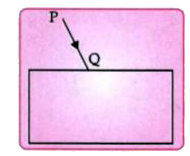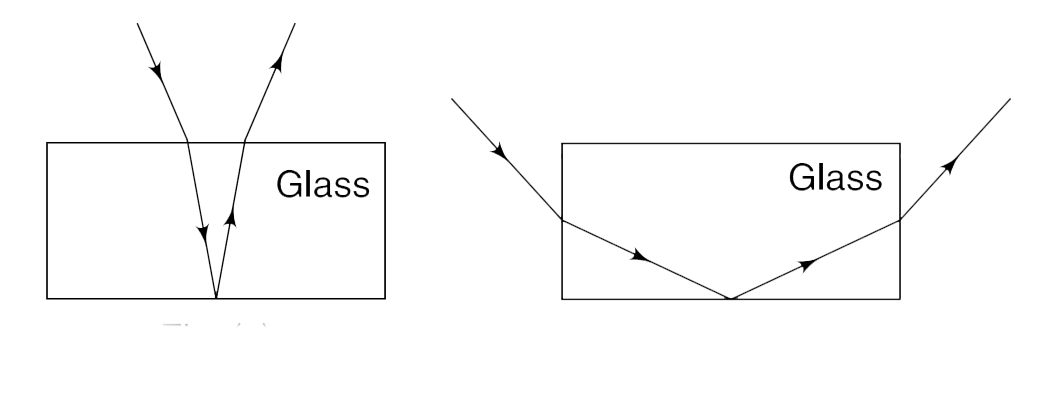When a ray of light passes through a rectangular glass block, the direction of emergent ray is ___to the incident ray.
Parallel
Similar Questions
Knowledge Check
A student traces the path of a ray of light passing through a rectangular glass slab for three different values of angle of incidence (∠i) namely 30∘,45∘ and 60∘. He extends the direction of incident ray by a dotted line and measures the perpendicular distance 'l' between the extended incident ray and the emergent ray. He will observe that :
 Al' keeps on increasing with increase in angle of incidenceBl' keeps on decreasing with increase in angle of incidenceCl' ramains the same for all three angles of incidence.Dl' is the maximum for ∠i=45∘ and is less then this value both for ∠i=30∘ and ∠i=60∘
Al' keeps on increasing with increase in angle of incidenceBl' keeps on decreasing with increase in angle of incidenceCl' ramains the same for all three angles of incidence.Dl' is the maximum for ∠i=45∘ and is less then this value both for ∠i=30∘ and ∠i=60∘A ray of white light passes through a rectangular glass slab, entering and emerging at parallel faces. The angle of incidence measured from the normal to the glass surface, is large. Then
AWhite light will emerge from the slabBThe light emerging from the slab will have a number of parallel, colored raysCThe emergent rays will not form a spectrum on a screenDColors will be seen if the emergent rays enter the eye directlyA student does the experiment on tracing the path of a ray of light passing through a rectangular glass slab for different angles of incidence. He can get a correct measure of the angle of incidence and the angle of emergence by following the labelling indicated in figure :
 AABBCCDD
AABBCCDD
Draw a ray diagram to show refraction through a rectangular glass slab. How is the emergent ray related to incident ray ? What is its lateral displacement ?
View SolutionAmol performed an experiment on tracing the path of a ray of light passing through a rectangular glass slab. When ray of light enters from air to glass slab, he observed ∠I=45∘. The angle of refraction must be
View SolutionIn the diagram below, PQ is a ray of light incident on a rectangular glass block.

Copy the diagram and complete the path of the ray of light through the glass block. In your diagram, mark the angle of incidence by letter 'i' and the angle of emergence by the letter 'e'.
View SolutionWhen rays of light are incident on a glass slab, then the incident ray and emergent ray are ____ to each other.
View SolutionWhen a ray of light passes from air to glass, for what angle of incidence, the ray will not be deviated?
View Solution

